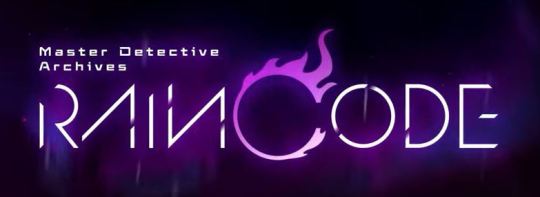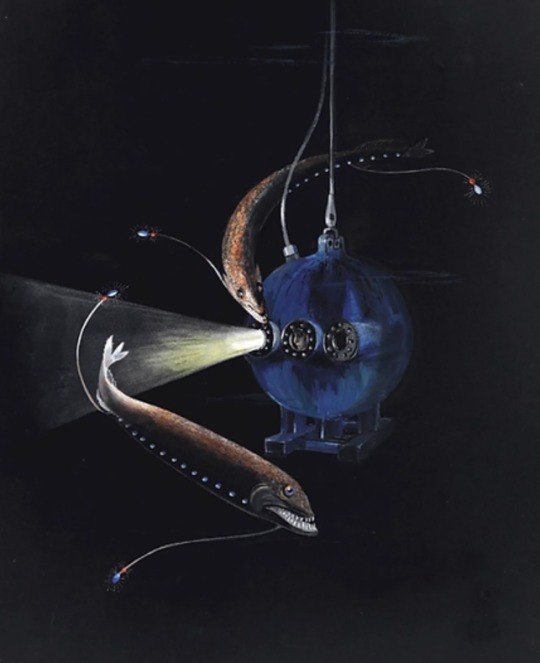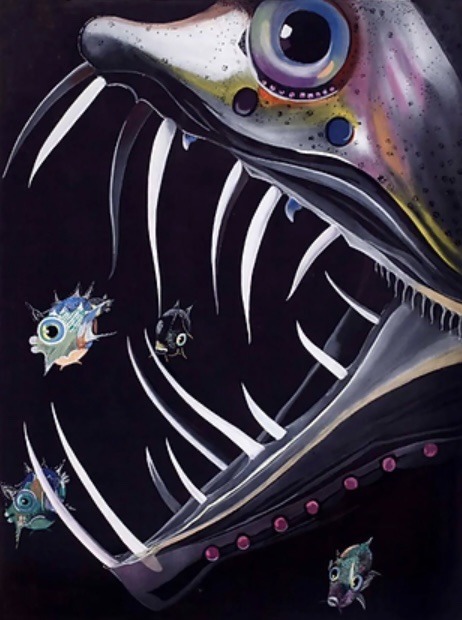#corporate agency illustration
Text
Cupid Parasite: Sweet & Spicy Darling coming west in 2024
Gematsu Source

Idea Factory International will release otome visual novel Cupid Parasite: Sweet & Spicy Darling for Switch in 2024 in the west, the publisher announced.
Cupid Parasite: Sweet & Spicy Darling will launch first in Japan on November 30.
Here is an overview of the game, via Idea Factory International:
About
While working for a major marriage agency named Cupid Corporation, Cupid the goddess of love herself, strived to become the top bridal advisor. She was assigned five hopeless clients known as the Parasite 5!
Even after guiding them through mock dates, matchmaking seminars, and the reality show “Parasite House,” all five abruptly canceled their memberships!
Yet their departures brought all their personal challenges to the surface. As she confronted these issues with them, they overcame many unexpected obstacles…
And she fell in love with “him.”
This is the continued love story of the goddess of love, Cupid, experiencing love firsthand. It’s the tale of when she becomes a goddess “only” for him.
Marriage wasn’t the end goal, but the start of a new chapter. Whether they began dating or got married, the only thing awaiting them is a series of unexpected challenges!
A mysterious new creature has appeared in Los York! Could it be a divine message or evidence of an unknown civilization?
A love story so sweet, it’ll make your heart melt! The whirlwind of feelings taking the world by storm is far from over!
An endearing, joyful, and chaotic tale that’s richer and more exhilarating than ever! This romance featuring a former goddess is so sweet and spicy, it’ll make your teeth ache and set your soul ablaze!
And in Merenice Levin’s route, her days as Cupid are far from over! A romantic and comedic story in the world of matchmaking is set to unfold!
Key Features
Sweeter and Spicier! – Return to Los York with the original cast of Cupid Parasite, plus an all new-character Merenice Levin. Rendezvous with seven of the sweetest and spiciest bachelors in up to three game modes and unlock over 80 CGs, including some that may be too hot to handle!
All Different Flavors to Choose From – Pick from three different modes that can satiate anyone with a sweet tooth. Select “After Drama” mode to follow-up with the original Parasite 6 and pick up from where you last left off. Go with “New Parasite” mode for a chance to experience Merenice Levin’s perspective of the events that take place after the common route of Cupid Parasite. You can also explore routes you unlocked in “Bonus Episode” mode for six bonus episodes with their own unlockable CGs!
In Sweetness and In Spiciness?! – You must choose the flavor of the next course. Will you go with the sweet? Or will you go with the spicy? When prompted with the choice during gameplay, select between sweet or spicy to impact the ending of your selected route. Manage to balance the flavors for a chance at something really appetizing.
Rich, Decadent Visuals and Savory Scenarios – The original scenario writer and illustrator of Cupid Parasite return! Ririka Yoshimura (scenario writer) and Yuuya (illustrator) join forces once again to bring fans a delectable addition to the Cupid Parasite universe.
Watch a teaser trailer below. View a set of screenshots at the gallery. Visit the official website here.
Teaser Trailer
youtube
#Cupid Parasite: Sweet & Spicy Darling#Cupid Parasite#Idea Factory#Idea Factory International#otome game#visual novel#Gematsu#Youtube
214 notes
·
View notes
Text
the one thing i feel pretty certain about for this episode is that america will not decide the election. a decision will be made, a president will be elected, but america will not be the deciding factor.
succession can’t mimic 2016 or 2020 point blank, that would be boring and have nothing to say. it can’t try to outdo trump because it’ll go too whacky and fall flat like veep’s last season (sorry conheads, no way he’s winning). but what it CAN do is illustrate the immensely corrupt, often arbitrary, and hugely influential nature of news media and conglomerations on political processes. i think probably jimenez will be in the lead, then atn/waystar does something to, i don’t know, discount votes or cast suspicion on jimenez or call the election for mencken early, and the tide will shift, even though the votes are already in. the votes don’t actually matter. the actual result doesn’t actually matter. that’s the power logan (and as an extension, billionaires and CEOs in general) hold. shiv says it herself to logan in s4e2: “just cause you say it’s true doesn’t make it true. everyone just fucking agrees with you and believes you, so it becomes true and then you can turn around and say like, 'oh, you see? see? i was right.'” but it doesn’t matter that logan’s “a human fucking gaslight,” everything he says comes true anyways. not because he was right, but because that’s how it works. he says things and then they happen, regardless of what the truth is or what should actually come to pass. that’s been one of the key throughlines since the very first episode of the entire show when, in response to kendall calling logan out of touch because times are changing and logan isn't changing with them, logan hisses that everyone always says you’re wrong until you do it and prove you were right: “you make your own reality.” you can't miss the bus if you're the one driving it. the election, the votes, the political process? none of that matters. it was always going to come down to the roys and their ilk (allies or enemies, just the top 1%) — that was the whole point of “what it takes” (the mencken episode) last season, after all.
i’ve seen lots of theories about what america will choose and how the candidates will respond and all that and i just don’t think that’s the show’s focus; i think the whole point is to demonstrate the lack of agency, the illusion of democracy. because, i mean, we’ve already seen the fall of democracy via fascist election and fascist election-denial, both in real life and in the countless (usually mid) satires created afterwards. it would be disappointing to see succession use the election to reiterate that same point of 'ohhh alt-right ahhhhh!!!' i don’t think it’ll be about ‘fascism’ at all — at least, not ‘trump-y’ fascism. it’ll be about fascism in the broader sense, the kind that doesn't sport a KKK hood (even when it keeps one tucked away in the attic). it's the fascism that every single roy (very much including shiv and kendall) aid and abet -- the fascism that so many succession fans don't seem to regard as fascism, despite it quite literally being the definition of fascism. trump wasn’t the entrance of fascism into our political process. he wasn’t the lone sign of the failing of american democracy. democracy in america has long been illusory, trump just made it more blatantly evident with his particular brand of hate-speech-ridden masculinist in-your-face fascism.
so i think that’s what this episode will hopefully focus on — america will not decide. corporations, news media, and the roys will. thus, the president will most likely become president not because the country supports his policies the most, but because he’s likely to agree to help block a business deal for a major media empire, and the other candidate is unlikely to. and this will likely come to pass due to said major media empire's interference and influence: they create their own reality. they say it, and everyone agrees with them and believes them, so it becomes true.
#WOOF okay here's my unnecessary ~thematic prediction~ for this episode#i have some more like random thoughts ab what'll happen but those r less thought out and more throwing shit at the wall etc#but i've been thinking a lot ab this ep n idk i just can't see any other way it could be done satisfyingly -- they can't just do 2016/2020#again. the focus has to be elsewhere. i have some specifics thoughts on details but again those r kinda random n will be in another post#after bizarrely getting a lot of things right this szn i know a lot of people are looking to me to see what i'll say for this ep and let me#remind yall that I AM LITERALLY JUST GUESSING BASED ON MY UNDERSTANDING OF THE SHOW AND HOW NARRATIVES#TEND TO WORK PARTICULARLY IN SUCCESSION! if i am wrong which i very well might be please do not crucify me. i know literally#nothing more than anyone else i'm just a random english/gov major who likes speculating about media ! that said if i end up right again#somehow then yes i am a prophet i am jesse armstrong i have never been wrong about anything in my life. etc#watch this age so poorly tho.#LOL#also fwiw i dont think the Shock etc is going to come from the election results - maybe possibly from the way things happen (i could see a#line of miscommunication resulting in fucked up outcomes etc which i can get into in another post) or a roy sibs moment but i just#don't think there's any way the results themselves cld be surprising. it's jimenez or mencken. it's not gonna be connor guys.#succession#succession spoilers#except not really. just succession speculation more than anything else#long post#succession speculation#100
202 notes
·
View notes
Text
[I]magine a more decolonial relationship with land. When we think about maps, they really are biographies of land. They teach us about the histories of lands and the people who lived there [...]
In a [...] colonial system, in a capitalist system, we are alienated from land, we tend to see land as a commodity. And in the mapping [...], the cartographies of capital [...], what happens is that developers will enclose a piece of land and will fragment it even further until it's broken up into smaller and smaller pieces [...]. And I've seen cases where one piece of land will have a one hundred and fifty page cultural impact assessment, saying that the impact of development on this land would have a tremendously devastating effect [...] and in an adjacent piece of land that there would only be a 10 page cultural impact assessment because the [colonial administrators] only look at whatever is within the red boundary lines and not at the ways in which multiple sites comprise a complex. [...]
By contrast, when you look at the ways that Kānaka Maoli map land, they map places in relationship to each other [...]. [There is] importance of preserving the continuity of stream flows from the mountains through to the seas because the stream flows are important to the the mixing of the salt and the fresh water, which creates the brackish water estuaries that are nurseries for baby fish. And so in these kinds of stories about land [...], you can see these ecological continuities and relationships, what Kanaka Maoli call pilina, [...] that connection, [...] that relationality. [...] And [...] they [the mo’o] later disperse to every[where] [...], to fish ponds, to springs, to pools, to waterfalls and streams. [...] And they even came up with a word for land called moʻoʻāina, meaning lands that are connected in a series within an ahupuaʻa [...].
---
And so this [...] is a story about water conservation, it's about the protection of water. Today we see large corporations diverting waters away from streams to feed the sugar plantations because sugar is an extremely thirsty plant. But later we saw it going to feed housing developments. Right now, the military banks water, there's water banking going on in Hawaii. [...]
It is just amazing how abundant lands get condemned as being agriculturally unfeasible by state agencies that want to develop things like industrial parks. And capital doesn't just map wastelands, it creates the illusion of abundant lands as wastelands that they then degrade [...]. And that, to me, is the most horrible thing – to take a living land and to make it appear as if it's a wasteland. [...] [B]ecause the state wants the land for other purposes. So it's using that illusion of scarcity in order to claim the mountain [...]. And I remember a planner asking me the question, do you know what was the most agriculturally abundant land on Oʻahu? And I said, was it on the windward side where there's a lot of rain? He says, no, it's where you see Schofield Barracks right now. And that's also true for Lualualei, where the naval radio transmitter towers are located. The military took the most abundant lands and instead of planting food, they seeded unexploded ordinances.
And that, to me, illustrates both the dangers of the maps of capital versus Indigenous stories about Mauna Kea that point to the fact that the mauna is a container of water. If you look at stories from these kilo observations, embedded in the oli is a recognition that the primary source of water for Mauna Wakea is fog drip and that the land is saturated with water. And if you look at other stories about Mauna a Wakea, there are stories about Kamiki gathering water from Lake Waiau, which is near the summit of the Mauna and some of the water splashing over the sides of his bowl to create all of the springs that extend out from Mauna Kea [...] miles and miles away. And so this understanding of Mauna Kea is important because Mauna Kea sits on five aquifers [...].
And that is exactly what's happening: these maps of capital create the illusion of scarcity, which these industrial products then manifest. [...]
---
So, for example, Noelani Puniwai is a professor at the University of Hawaiʻi and she's a Kanaka Maoli scientist. And she explains that we have to learn the akua or the elements of the places where we live. [...] So, for example, Kāne is known as the water that flows underground. He's the fresh water flows underground. [...] The important thing to remember in terms of climate is that the cold waters of Kāne, the fresh waters emerge into Kanaloa, into the ocean, through underground springs and through streams and stream flows. That's important in regulating the temperature of waters around our islands. [...] [T]he cold waters around the islands protect us from hurricanes. [...] [T]hey [the hurricanes] tend to veer north or they veer south [...]. And these freshwater springs around the islands are famous. They are places called Punalu’u [...].
So that relationship between [...] the ocean and the freshwater springs, we can see is crucial to protecting the islands. And so how do we continue that relationship, how do we help to support that relationship when so much water is being diverted by corporate and militarized projects?
---
Words of Candace Fujikane. As interviewed by Kamea Chayne. Text and transcript published as “Candace Fujikane: Mapping for Abundance Against Cartographies of Capital (Ep311).” An episode of the podcast Green Dreamer hosted by Kamea Chayne. June 2021. [Bold emphasis and some paragraph breaks/contractions added by me.]
195 notes
·
View notes
Video
youtube
The Truth About Corporate Subsidies
Why won't big American corporations do what's right for America unless the government practically bribes them?
And why is the government so reluctant to regulate them?
Prior to the 1980’s, the U.S. government demanded that corporations act in the public interest.
For example, the Clean Air Act of 1970 stopped companies from polluting our air by regulating them.
Fast forward to 2022, when the biggest piece of legislation aimed at combating the climate crisis allocates billions of dollars in subsidies to clean energy producers.
Notice the difference?
Both are important steps to combating climate change.
But they illustrate the nation’s shift away from regulating businesses to subsidizing them.
It’s a trend that’s characterized every recent administration.
The CHIPS Act –– another major initiative of the Biden administration –– shelled out $52 billion in subsidies to semiconductor firms.
Donald Trump’s “Operation Warp Speed” delivered over $10 billion in subsidies to COVID vaccine manufacturers.
Barack Obama’s Affordable Care Act subsidized the health care and pharmaceutical industries.
George W. Bush and Obama bailed out Wall Street following the 2008 economic crash while providing about $80 billion in rescue funds for GM and Chrysler.
And the federal government has been subsidizing big oil and gas companies for decades, to the tune of hundreds of billions of dollars.
Before the Reagan era, it was usually the case that America regulated rather than subsidized big business to ensure the wellbeing of the American public.
The Great Depression and FDR’s Administration created an alphabet soup of regulatory agencies — the SEC, FCC, FHA, and so on — that regulated businesses.
Corporations were required to produce public goods, or avoid public “bads” like a financial meltdown, as conditions for staying in business.
If this regulatory alternative seems far-fetched today, that’s because of how far we’ve come from a regulatory state to a subsidy state.
Today it’s politically difficult, if not impossible, for government to demand that corporations bear the costs of public goods. The government still regulates businesses, of course –– but one of the biggest things it does is subsidize them. Just look at the growth of government subsidies to business over the past half century.
The reason for this shift is corporations now have more political clout than ever before.
Industries that spend the most on lobbying and campaign contributions have often benefited greatly from this shift from regulation to subsidy.
Now, subsidies aren’t inherently bad. Important technological advances have been made because of government funding.
But subsidies are a problem when few, if any, conditions are attached — so there’s no guarantee that benefits reach the American people.
What good is subsidizing the healthcare industry when millions of Americans have medical debt and can’t afford insurance? What good are subsidies for oil companies when they price gouge at the pump and destroy the planet? What good are subsidies for profitable semiconductor manufacturers when they’re global companies with no allegiance to America?
We’re left with a system where costs are socialized, profits are privatized.
Now, fixing this might seem daunting — but we’re not powerless. Here’s what we can do to make sure our government actually works for the people, not just the powerful.
First, make all subsidies conditional, so that any company getting money from the government must clearly specify what it will be spent on – so we can ensure the funds actually help the public.
Second, ban stock buybacks so companies can’t use the subsidies to pump up their profits and stock prices.
Third, empower regulatory agencies to do the jobs they once did — forcing companies to act in the public interest.
Finally, we need campaign finance reform to get big corporate money out of politics.
Large American corporations shouldn’t need government subsidies to do what’s right for America.
It’s time for our leaders in Washington to get this message, and reverse this disturbing trend.
274 notes
·
View notes
Text
My observations of Northwest China illustrate the way that contemporary colonial projects tend toward the “operational enclosure,” which describes a digitally-mediated social hierarchy in which the movement and behaviour of certain racialized populations are made automatically detectable and thus controllable, while privileged settler populations are permitted to move around in a relatively frictionless way—for instance, doors are opened automatically for them by security workers who profile them, or by camera systems that identify them as non-Muslim. Coined by communications scholars Mark Andrejevic and Zala Volcic, this form of enclosure is being adapted by government agencies and corporations across the Global South to slot marginalized populations into the operative logics of actionable intelligence. For privileged settlers, a seamless digitally integrated society brings them pride in the advancement of their country’s capabilities along with consumer convenience. For Muslims, on the other hand, the operational enclosure provokes intense fear.
In Northwest China, advanced dataveillance technology is key in producing an efficient settler colonial state that can classify and segment its inhabitants. Two interrelated phenomena are at play here, one regarding the technology itself and the other about how it molds social reality. First, the technology is a black box—security workers do not really understand how it works beyond the reductive readouts they see on their screen: 99.11 percent match. Orange tag. Potentially “untrustworthy.”
Second, in practice these simplistic characterizations and predictions come to be seen as truth. The technology is viewed as an unquestioned authoritative good, since it is perceived as scientific and state-of-the-art intelligence. The predictions made become legally enforced truths.
Together, these two elements, the digital black box and the legal and social discourse of technological intelligence, are producing one of the first mass experiments in the colonial operational enclosure.
64 notes
·
View notes
Text
Master Detective Archives: Rain Code coming Spring 2023 to Dangan your friggin’ Ronpas

So today’s (9/13/22) edition of “Nintendo Direct: Now with 400% More Farming Games” included a new trailer for Enigma Archives: Rain Code — now titled “Master Detective Archives: Rain Code.”


Full trailer is here! (This is just a link to where it is in the overall Nintendo Direct. They haven’t posted a broken-out version yet. I’ll update this to embed that when it hits.)
Here’s some of the information we saw and learned today:
— This takes place in a corporate-controlled metropolis where long-unsolved cases are investigated by so-called “master detectives” from around the world.

— You play as Yuma Kokohead, an amnesiac detective. (Naturally. We love those.) He’s just a trainee at his agency, though.

— Shinigami is a spirit who haunts Yuma because of a pact between them. She’ll be your partner, evidently.

— So you investigate crime scenes and talk to people in 3D. That’s cool.
— “When you’re ready,” Shinigami conjures you a mystery labyrinth. This is where you’ll work through the evidence and logic of the case via physical manifestations of the mystery, such as...

...this crazy mine cart ride that seems to clearly be a “Logic Dive/Psyche Taxi” type-event. “MIND MINE”? :)

— Oh, but apparently “mystery phantoms” will attempt to hinder your progress. So you’ll have to “cut through their contradictions.” This segment shows you dodging attacks in an arena that’s very “Tokyo Mirage Sessions”-esque, then literally slashing through words blasted at you.
It’s “coming first to Switch in Spring 2023.” So there’ll obviously be other platforms later on. (The new trailer also makes it clear that there’s gonna be a full English voiceover, in case you were curious.)
Previous info we have:
— According to DR writer/creator Kodaka, he’s spent five years on this game, which he considers his “masterpiece” (DAMN, ok dude).
— Danganronpa character designers/illustrators Rui Komatsuzaki and Shimadoriru plus Danganronpa music gurus Masafumi Takada and Jun Fukuda are all in on this. You can definitely see/hear that in the trailer.
#enigma archives: rain code#kazutaka kodaka#danganronpa#Rui Komatsuzaki#masafumi takada#jun fukada#Shimadoriru#master detective archives: rain code#nintendo direct#tookyo games#yuma kokohead#video games#gifs#rain code gifs#rain code
266 notes
·
View notes
Text

Bill Bramhall, New York Daily News
* * * *
LETTERS FROM AN AMERICAN
March 5, 2024 (Tuesday)
HEATHER COX RICHARDSON
MAR 6, 2024
Possibly the biggest story today in terms of its impact on most Americans’ lives is that as part of its war on junk fees, the Biden administration announced an $8 cap on late fees charged by credit card issuers that have more than a million accounts. These companies hold more than 95% of outstanding credit card debt. Currently, fees average $32, and they fall on more than 45 million people. The White House estimates that late fees currently cost Americans about $25 billion a year. The rule change will save Americans about $10 billion a year.
The administration also announced a “strike force” to crack down on “unfair and illegal pricing.” Certain corporations raised prices as strained supply chains made it more expensive to make their products. But after supply chains were fixed and their costs dropped, corporations kept consumer prices high and passed on record profits to their shareholders. The strike force will encourage federal agencies to share information to enable them to identify businesses that are breaking the law.
Banking organizations and the U.S. Chamber of Commerce came out swinging. Executive vice president Neil Bradley said that such regulation “to micromanage how private businesses set prices will have the same result: shortages, fewer choices for consumers, a weaker economy, and less jobs.”
And in what perhaps illustrates why voters don’t appear to know much about what the administration is doing, these stories have gotten far less attention today than the primaries and caucuses.
Today is Super Tuesday, when 15 states and one territory choose their primary candidates for president and for the House of Representatives and the Senate (although in Alaska, only Republicans vote today and in American Samoa, only Democrats vote today). About 36% of Republican delegates will be awarded today, and that’s the side people will be watching because on the Democratic side, Biden has a virtually uncontested lead with the exception of candidate Jason Palmer, who won the Democratic caucuses in American Samoa.
Trump is expected to win today’s Republican contests, but observers are watching to see what percentage of the vote challenger Nikki Haley, former governor of South Carolina, takes from him. As I write this, she appears to have won Vermont and run strongly elsewhere, especially in the suburbs. Three states conducted exit polls and they, too, show warning signs for Trump as 78% of Haley voters in the North Carolina primary, 69% in California, and 68% in Virginia refused to say they would support the party’s nominee no matter who it is.
It is also notable that polls showed Trump with a much stronger margin over Haley than materialized today. As Josh Marshall of Talking Points Memo notes, it is not yet clear what that means.
Trump is on his way to becoming the Republican presidential nominee. On Friday the Republican National Committee (RNC) will meet in Houston to choose a new chair. The only people running are Trump loyalist Michael Whatley and Trump’s daughter-in-law Lara Trump, who hope to become co-chairs. Natalie Allison reported today in Politico that the RNC will not vote on a resolution that would have prohibited the RNC from covering Trump’s legal bills.
Trump is certainly in need of money. Today, his lawyers demanded a new trial in the second E. Jean Carroll case, complaining that the judge limited what he could say, and asked for a judgment figure significantly lower than the $83.3 million the jurors awarded. By the end of Friday, Trump must post either the money or a bond covering it.
This morning, Trump told Brian Kilmeade of Fox & Friends that he was not worried about coming up with the money to pay the $454 million he owes in the New York fraud case, or the interest it is accruing at more than $100,000 a day. “I have a lot of money. I can do what I want to do,” Trump said. “I don't worry about anything. I don't worry about the money. I don't worry about money.”
Yesterday, Allen Weisselberg, the former chief financial officer of the Trump Organization, admitted he lied under oath during his testimony in that case. He will be sentenced in April.
Super Tuesday is also the day that the 2024 presidential campaign begins in earnest for those who had not previously been paying much attention, and Taylor Swift today urged her 282 million followers on Instagram “to vote the people who most represent YOU into power. If you haven't already, make a plan to vote today,” she wrote.
The presidential contest is only one of the many contests on the ballot today, but most of those results are not yet in.
Although the Arizona primary will not be held until March 19, we did learn today that Senator Kyrsten Sinema (I-AZ) will not run for reelection. Her exit will leave the Arizona senator’s race to election-denying Trump Republican Kari Lake, who lost the Arizona governorship in 2022 (although she continues to insist she won it), and Arizona Democratic representative Ruben Gallego.
Just as voters don’t appear to know much about what the administration has done to make their lives better, a recent study from a Democratic pollster suggests that voters don’t seem to know much about Trump’s statements attacking democracy. When informed of them, their opinion of Trump falls.
Trump has called for mass deportations of immigrants and foreign-born U.S. citizens; on February 29, he said he would use local police as well as federal troops to round people up and move them to camps for deportation. Asked yesterday by a Newsmax host if he would “order mass deportations if you win the White House,” Trump answered: “Oh, day one. We have no choice. And we’ll start with the bad ones. And you know who knows who they are? Local police. Local police have to be given back their authority, and they have to be given back their respect and immunity.”
On the one hand, caps to credit card late fees and an attempt to address price gouging; on the other hand, local police with immunity rounding up millions of people and putting them in camps, for deportation. And, in between the two, an election.
People had better start paying attention.
LETTERS FROM AN AMERICAN
HEATHER COX RICHARDSON
#Heather Cox Richardson#Letters From An American#deportations#TFG#election 2024#economy#Bill Bramhall
8 notes
·
View notes
Text
what's actually wrong with 'AI'
it's become impossible to ignore the discourse around so-called 'AI'. but while the bulk of the discourse is saturated with nonsense such as, i wanted to pool some resources to get a good sense of what this technology actually is, its limitations and its broad consequences.
what is 'AI'
the best essay to learn about what i mentioned above is On the Dangers of Stochastic Parrots: Can Language Models Be Too Big? this essay cost two of its collaborators to be fired from Google. it frames what large-language models are, what they can and cannot do and the actual risks they entail: not some 'super-intelligence' that we keep hearing about but concrete dangers: from climate, the quality of the training data and biases - both from the training data and from us, the users.
The problem with artificial intelligence? It’s neither artificial nor intelligent
How the machine ‘thinks’: Understanding opacity in machine learning algorithms
The Values Encoded in Machine Learning Research
Troubling Trends in Machine Learning Scholarship: Some ML papers suffer from flaws that could mislead the public and stymie future research
AI Now Institute 2023 Landscape report (discussions of the power imbalance in Big Tech)
ChatGPT Is a Blurry JPEG of the Web
Can we truly benefit from AI?
Inside the secret list of websites that make AI like ChatGPT sound smart
The Steep Cost of Capture
labor
'AI' champions the facade of non-human involvement. but the truth is that this is a myth that serves employers by underpaying the hidden workers, denying them labor rights and social benefits - as well as hyping-up their product. the effects on workers are not only economic but detrimental to their health - both mental and physical.
OpenAI Used Kenyan Workers on Less Than $2 Per Hour to Make ChatGPT Less Toxic
also from the Times: Inside Facebook's African Sweatshop
The platform as factory: Crowdwork and the hidden labour behind artificial intelligence
The humans behind Mechanical Turk’s artificial intelligence
The rise of 'pseudo-AI': how tech firms quietly use humans to do bots' work
The real aim of big tech's layoffs: bringing workers to heel
The Exploited Labor Behind Artificial Intelligence
workers surveillance
5 ways Amazon monitors its employees, from AI cameras to hiring a spy agency
Computer monitoring software is helping companies spy on their employees to measure their productivity – often without their consent
theft of art and content
Artists say AI image generators are copying their style to make thousands of new images — and it's completely out of their control (what gives me most hope about regulators dealing with theft is Getty images' lawsuit - unfortunately individuals simply don't have the same power as the corporation)
Copyright won't solve creators' Generative AI problem
The real aim of big tech's layoffs: bringing workers to heel
The Exploited Labor Behind Artificial Intelligence
AI is already taking video game illustrators’ jobs in China
Microsoft lays off team that taught employees how to make AI tools responsibly/As the company accelerates its push into AI products, the ethics and society team is gone
150 African Workers for ChatGPT, TikTok and Facebook Vote to Unionize at Landmark Nairobi Meeting
Inside the AI Factory: the Humans that Make Tech Seem Human
Refugees help power machine learning advances at Microsoft, Facebook, and Amazon
Amazon’s AI Cameras Are Punishing Drivers for Mistakes They Didn’t Make
China’s AI boom depends on an army of exploited student interns
political, social, ethical consequences
Afraid of AI? The startups selling it want you to be
An Indigenous Perspective on Generative AI
“Computers enable fantasies” – On the continued relevance of Weizenbaum’s warnings
‘Utopia for Whom?’: Timnit Gebru on the dangers of Artificial General Intelligence
Machine Bias
HUMAN_FALLBACK
AI Ethics Are in Danger. Funding Independent Research Could Help
AI Is Tearing Wikipedia Apart
AI machines aren’t ‘hallucinating’. But their makers are
The Great A.I. Hallucination (podcast)
“Sorry in Advance!” Rapid Rush to Deploy Generative A.I. Risks a Wide Array of Automated Harms
The promise and peril of generative AI
ChatGPT Users Report Being Able to See Random People's Chat Histories
Benedetta Brevini on the AI sublime bubble – and how to pop it
Eating Disorder Helpline Disables Chatbot for 'Harmful' Responses After Firing Human Staff
AI moderation is no match for hate speech in Ethiopian languages
Amazon, Google, Microsoft, and other tech companies are in a 'frenzy' to help ICE build its own data-mining tool for targeting unauthorized workers
Crime Prediction Software Promised to Be Free of Biases. New Data Shows It Perpetuates Them
The EU AI Act is full of Significance for Insurers
Proxy Discrimination in the Age of Artificial Intelligence and Big Data
Welfare surveillance system violates human rights, Dutch court rules
Federal use of A.I. in visa applications could breach human rights, report says
Open (For Business): Big Tech, Concentrated Power, and the Political Economy of Open AI
Generative AI Is Making Companies Even More Thirsty for Your Data
environment
The Generative AI Race Has a Dirty Secret
Black boxes, not green: Mythologizing artificial intelligence and omitting the environment
Energy and Policy Considerations for Deep Learning in NLP
AINOW: Climate Justice & Labor Rights
militarism
The Growing Global Spyware Industry Must Be Reined In
AI: the key battleground for Cold War 2.0?
‘Machines set loose to slaughter’: the dangerous rise of military AI
AI: The New Frontier of the EU's Border Extranalisation Strategy
The A.I. Surveillance Tool DHS Uses to Detect ‘Sentiment and Emotion’
organizations
AI now
DAIR
podcast episodes
Pretty Heady Stuff: Dru Oja Jay & James Steinhoff guide us through the hype & hysteria around AI
Tech Won't Save Us: Why We Must Resist AI w/ Dan McQuillan, Why AI is a Threat to Artists w/ Molly Crabapple, ChatGPT is Not Intelligent w/ Emily M. Bender
SRSLY WRONG: Artificial Intelligence part 1, part 2
The Dig: AI Hype Machine w/ Meredith Whittaker, Ed Ongweso, and Sarah West
This Machine Kills: The Triforce of Corporate Power in AI w/ ft. Sarah Myers West
#masterpost#reading list#ai#artificial art#artificial intelligence#technology#big tech#surveillance capitalism#data capital#openai#chatgpt#machine learning#r/#readings#resources#ref#AI now#LLMs#chatbots#data mining#labor#p/#generative ai#research#capitalism
34 notes
·
View notes
Text
The Luminous Lanes of Cyberpunk: How Dystopia Illuminates Human Triumph
In the shadows of towering megacorporations and beneath the neon haze of a perpetual nocturne, the cyberpunk genre has long been synonymous with dystopian futures rife with societal decay, technological overreach, and bleak narratives. However, hidden within these dark alleyways of fiction are slivers of light that reveal not only the resilience of the human spirit but also the potential for positive change. This article ventures into the often-overlooked positive aspects of cyberpunk media, examining how the genre's cautionary tales can inspire a brighter tomorrow.
Unearthing Optimism in a Dystopian Future
At its core, cyberpunk is a reflection of our deepest anxieties about the future—fears of losing our humanity to technology and of being crushed by unfeeling corporate structures. Yet, it's precisely this grim backdrop that magnifies each act of courage and each instance of compassion. In films like "Blade Runner," the quest for identity and autonomy in artificial beings spotlights the innate human desires for life and freedom, while in the game "Deus Ex," the choices presented to players emphasize the importance of individual agency even against overwhelming odds.
Cyberpunk as a Mirror to Society
Cyberpunk often presents exaggerated versions of our world, but these exaggerations are not baseless. The genre acts as a distorted mirror, magnifying real issues like the digital divide, privacy erosion, and corporate overreach. Through this lens, the audience is prompted to confront these problems, encouraging proactive thought about current societal trajectories. Take, for instance, the film "The Matrix," which, despite its simulated reality, urges viewers to question the nature of their own existence and to value the truth, no matter how uncomfortable it may be.
Technological Cautionary Tales
Technology, when unchecked, can lead to dehumanization and loss of control, a common motif in cyberpunk narratives. However, these stories also highlight the incredible potential of technology when it's in the right hands. In "Ghost in the Shell," the merging of man and machine raises ethical questions but also portrays technology as a means of transcending physical limitations and enhancing human capabilities.
The Triumph of the Underdog
Cyberpunk is teeming with characters that have nothing left to lose, pushing them to fight against oppressive regimes with cunning and tenacity. These underdogs often rally communities, sparking rebellion and change. In "Cyberpunk 2077," the player-controlled protagonist's journey through the crime-ridden Night City showcases that even in a corrupt world, individuals can make a difference.
Community and Connection
Contrary to its cold, mechanical exterior, cyberpunk is deeply human. The genre's narratives repeatedly show the importance of community and human connection. The makeshift families and alliances formed in the "Shadowrun" universe illustrate that solidarity and shared purpose can shine through the darkest of futures.
Conclusion: The Dawn After Dusk
While cyberpunk may never shed its gritty, somber roots, its stories are suffused with a light that's undeniable to those who look closely enough. By confronting the darkness, cyberpunk doesn't just caution—it empowers, offering visions of resilience, adaptability, and human connection that can guide us through the real challenges of our time. As we navigate our rapidly changing world, the positive lessons embedded in the cyberpunk ethos are beacons that can help steer society toward a more humane and hopeful horizon.
- Rev1
17 notes
·
View notes
Text
By: Jewish Institute for Liberal Values
Published: Apr 1, 2024
A Guide to Left-wing Antisemitism 🧵
Left-wing antisemitism entails prejudice, discrimination, or hostility against Jews, based on leftist ideologies. It's especially insidious, as it often masquerades as part of a broader "Social Justice" movement.

How does antisemitism on the left compare to the far-right?
Political horseshoe theory illustrates similarities between far-left and far-right antisemitism. Despite ideological differences, both extremes view Jews as a singular malevolent group with excessive power.
Far-right antisemitism is often overt and easily identifiable, while left-wing antisemitism is typically more subtle, making it more prevalent and socially acceptable among progressives.

What does left-wing antisemitism look like?
Labeling Jews as 'Oppressors': Jews are framed as “privileged” and “oppressors” within an “intersectional” academic framework, disregarding their diverse experiences and history of persecution.
Anti-Zionism: While criticizing Israeli policies is not inherently antisemitic, denying Jewish self-determination or deeming Israel illegitimate can be.
Collective Guilt: Holding all Jews accountable for Israel's actions constitutes a form of antisemitism.
Selective Outrage: Disproportionate criticism of Israel while overlooking similar or worse actions by other countries reflects a bias against Jews.
Holocaust Revisionism: Denying or downplaying the Holocaust, often disguised as questioning historical narratives or criticizing Israel, is a form of antisemitism sometimes found on the left.
Where does left-wing antisemitism come from?
While there have been various influences, one significant contributor stems from an academic framework that emerged around the 1970s: Postcolonial Theory.
This theoretical framework was pioneered by Palestinian-American scholar Edward Said, who framed Zionism as a “colonial project.”
Postcolonial Theory, like other Critical Theories, operates as a form of activist scholarship. While presenting itself as legitimate and rigorous, it prioritizes its political goals over the genuine production of knowledge.
Postcolonial Theory doesn't aim for historical accuracy. Instead, it seeks to "reenvision history" from the "perspective of the oppressed."
Within Postcolonial Theory, Israel is portrayed as a colonial, imperialist, oppressive power, while Palestinians are depicted as helpless victims without agency—even those that commit the October 7 atrocities.
This portrayal has significantly influenced perceptions, particularly in activist circles, turning the cause of "Free Palestine" into a trendy "Social Justice" issue.
How did left-wing antisemitism spread?
Middle-eastern Funding of Universities: Undisclosed billions from the Middle East to U.S. universities have influenced academic discourse, framing the Israel-Palestine conflict as a struggle for “indigenous rights” against “colonialism.”
Social Media Activism: Social media has helped propel what was once an obscure academic field mostly confined to college campuses into an international post-colonialist movement.
DEI: Through corporate diversity programs, post-colonial concepts have become a dominant ideology in mainstream institutions, including many Jewish organizations.
Underestimating the problem: Many Jewish organizations dedicated to combating Jew hatred chose to focus on far-right antisemitism, allowing left-wing antisemitism to proliferate.
Why the focus on left-wing antisemitism?
Many Jewish organizations already exist to tackle antisemitism associated with the far-right. While there is concern about threats on both sides of the aisle, the Jewish Institute for Liberal Values (JILV) focuses on the left.
JILV was formed in 2021 to address a specific ideology emerging on the left that has become embedded into our institutions and propagates antisemitic ideas and tropes.
Visit to learn more.
3 notes
·
View notes
Text
Today's Black History Month illustration is of Jane Bolin. She was the first Black woman to graduate from Yale Law School and the first Black woman judge in the United States.

Jane Matilda Bolin was born in Poughkeepsie, NY in 1908. She was raised by her father, Gaius, a renowned Black attorney in Dutchess County, NY. Her mother, Matilda, a white Englishwoman, died when she was 8 years old.

In 1924, Bolin attended Wellesley College in Massachusetts, one of two Black students in her class. They were excluded from social activities and because of racial discrimination, they had to find housing off campus.

After she graduated in the top 20 in 1928, she considered applying to Yale Law School. Despite being discouraged by an advisor at Wellesley because she was Black and a woman, she applied to Yale and was accepted. She attained a Juris Doctor degree from Yale in 1931. She was one of three women in her graduating class and the first Black woman to earn a law degree from Yale.

She was a clerk in her father’s law office until she passed the New York bar exam in 1932, the first Black woman to do so. She married Ralph E. Mizelle, a fellow attorney, in 1933 and opened up a practice together in New York City. In 1937, she was named Assistant Corporation Counsel of the City of New York.

Two years later, in a surprise ceremony at the World’s Fair, Mayor Fiorello LaGuardia appointed and swore in Bolin as Judge of the Domestic Relations Court (later known as the Family Court). She became the first Black woman judge, and she served on the Family Court bench for 40 years.

Fun fact: as a judge, Bolin didn’t wear judicial robes because she wanted to make children feel comfortable in her court.

During her tenure, Bolin fought against racial discrimination in the courts and advocated for children, especially children of color. She required that probation officers were assigned to cases regardless of race or religion and required that publicly funded childcare agencies accept children regardless of ethnicity.

Bolin reluctantly retired at the age of 70 in 1979. After retiring, she worked as a consultant and school-based volunteer and served on the board of the NAACP, the National Urban League, and the Child Welfare League. She died in 2007 at the age of 98 in Queens, NY.

I’ll be back tomorrow with another illustration and story!
#jane bolin#black history month#black history facts#black history matters#illustrators on tumblr#artists on tumblr
21 notes
·
View notes
Text
Cupid Parasite: Sweet & Spicy Darling launches May 28 in the west
From Gematsu

Otome visual novel Cupid Parasite: Sweet & Spicy Darling will launch for Switch on May 28 in the west, publisher Idea Factory International announced.
Cupid Parasite: Sweet & Spicy Darling first launched in Japan on November 30, 2023.
Here is an overview of the game, via Idea Factory International:
About
While working for a major marriage agency named Cupid Corporation, Cupid the goddess of love herself, strived to become the top bridal advisor. She was assigned five hopeless clients known as the Parasite 5!
Even after guiding them through mock dates, matchmaking seminars, and the reality show “Parasite House,” all five abruptly canceled their memberships!
Yet their departures brought all their personal challenges to the surface. As she confronted these issues with them, they overcame many unexpected obstacles…
And she fell in love with “him.”
This is the continued love story of the goddess of love, Cupid, experiencing love firsthand. It’s the tale of when she becomes a goddess “only” for him.
Marriage wasn’t the end goal, but the start of a new chapter. Whether they began dating or got married, the only thing awaiting them is a series of unexpected challenges!
A mysterious new creature has appeared in Los York! Could it be a divine message or evidence of an unknown civilization?
A love story so sweet, it’ll make your heart melt! The whirlwind of feelings taking the world by storm is far from over!
An endearing, joyful, and chaotic tale that’s richer and more exhilarating than ever! This romance featuring a former goddess is so sweet and spicy, it’ll make your teeth ache and set your soul ablaze!
And in Merenice Levin’s route, her days as Cupid are far from over! A romantic and comedic story in the world of matchmaking is set to unfold!
Key Features
Sweeter and Spicier! – Return to Los York with the original cast of Cupid Parasite, plus an all new-character Merenice Levin. Rendezvous with seven of the sweetest and spiciest bachelors in up to three game modes and unlock over 80 CGs, including some that may be too hot to handle!
All Different Flavors to Choose From – Pick from three different modes that can satiate anyone with a sweet tooth. Select “After Drama” mode to follow-up with the original Parasite 6 and pick up from where you last left off. Go with “New Parasite” mode for a chance to experience Merenice Levin’s perspective of the events that take place after the common route of Cupid Parasite. You can also explore routes you unlocked in “Bonus Episode” mode for six bonus episodes with their own unlockable CGs!
In Sweetness and In Spiciness?! – You must choose the flavor of the next course. Will you go with the sweet? Or will you go with the spicy? When prompted with the choice during gameplay, select between sweet or spicy to impact the ending of your selected route. Manage to balance the flavors for a chance at something really appetizing.
Rich, Decadent Visuals and Savory Scenarios – The original scenario writer and illustrator of Cupid Parasite return! Ririka Yoshimura (scenario writer) and Yuuya (illustrator) join forces once again to bring fans a delectable addition to the Cupid Parasite universe.
Watch a new trailer below.
Fan Disc Trailer
youtube
#Cupid Parasite: Sweet & Spicy Darling#Cupid Parasite#Idea Factory#Idea Factory International#otome game#visual novel#Gematsu#Youtube
98 notes
·
View notes
Text
Best Course After Graduation With 100% Placement In Amritsar
Choosing the best skill course after graduation with 100% placement in Amritsar would depend on your interests, career goals, and the demand in the job market. Here are some popular skill courses that often have high placement rates and demand in various industries:
Digital Marketing: With the increasing digitization of businesses, digital marketing skills are in high demand. Courses covering SEO, social media marketing, content marketing, and analytics can equip you with valuable skills sought after by companies of all sizes. North Digital Academy will consider as best option if you are planning for digital marketing
Data Science and Analytics: Data is driving decision-making across industries. Learning skills in data analysis, machine learning, and data visualization can lead to lucrative career opportunities in sectors like finance, healthcare, e-commerce, and more.
Web Development: Web developers are needed to build and maintain websites for businesses and organizations. Learning front-end and back-end development languages like HTML, CSS, JavaScript, and frameworks like React or Angular can open doors to employment opportunities.
Graphic Design: If you have a creative flair, pursuing a course in graphic design can lead to opportunities in advertising agencies, design studios, publishing houses, and more. Learning tools like Adobe Photoshop, Illustrator, and InDesign is essential for this field.
Hospitality Management: Amritsar is a tourist destination with a growing hospitality industry. Courses in hospitality management can lead to jobs in hotels, resorts, event management companies, and tourism agencies.
English Language Training: With the increasing importance of English language skills in various sectors, courses in English language training can lead to opportunities as English language trainers, content writers, or communication specialists.
Accounting and Finance: Courses in accounting software like Tally or courses in financial accounting can lead to job opportunities in accounting firms, corporate finance departments, or banks.
When choosing a course, consider factors such as the reputation of the institution offering the course, the curriculum, industry relevance, and placement records. Additionally, conducting thorough research and consulting with professionals in your desired field can help you make an informed decision.
2 notes
·
View notes
Text
Dr. Stacy Alaimo
(she/they)
Professor of English, Director of Graduate Studies for English;
Core Faculty Member, Environmental Studies;
COLT Participating Faculty; CSWS Faculty Affiliate
University of Oregon
I write about the strange and often volatile relations between environmentalism, science, theory, literature, art, popular culture, and gender. My concept of trans-corporeality links material feminism, new materialism, environmental justice, and environmental posthumanism. While my first three books build one coherent theoretical argument, my recent work turns to ocean life, developing the "blue" or oceanic humanities along with marine science studies.
Current Project:
The Abyss at Hand: Aesthetic Encounters in the Science, Art, and Literature of Deep Sea Creatures.
This book investigates the science, art, film, science fiction, and science writing about deep sea creatures, from the work of William Beebe and Else Bostelmann in the 1930s to the Census of Marine Life, which concluded in 2010. It investigates how aesthetic recognition of deep sea creatures scrambles scientific epistemologies and expands the terrain of environmental concern. I grapple with colonialist global visions, critique white masculinist narratives of exploration, analyze the categories of the surreal, weird, and alien; and swirl together emerging theories and methods in the blue humanities, while suggesting a more fluid and potent sense of the aesthetic. As the threats to ocean ecologies accelerate and the deep seas receive scientific, popular, and political attention, I hope this book will incite more discussion of the abyss at hand.
Exposed: Environmental Politics and Pleasures in Posthuman Times (Minnesota 2016) contends that the anthropocene is no time to set things straight. The book resists the temptation to engage in any sort of grand mapping that would be inimical to the embedded modes of epistemological, ethical, and political engagement that it traces, working instead through a surprising mix of theory, science, art, and activism. It begins by considering the pleasures of inhabiting places where the domestic refuses to domesticate and the walls decline to divide. It ends with an imaginary inhabitation of the dissolving shells of sea creatures who epitomize extinction in anthropocene seas. Along the way it considers queer animals, naked protests, the strange agencies of plastic pollution, and the gendered politics of climate change. Dwelling in the dissolve, where fundamental boundaries have begun to come undone, unraveled by unknown futures, can be a mode of ethical engagement and political inhabitation, which emanates from both feminist and environmentalist practices. Exposed locates new materialisms and material feminisms in fleeting ethical moments and compromised political sites that make up the massive temporal and geographical expanse of the anthropocene.[Cover art: Marina Zurkow, video still from "Slurb."]
Italian translation, published by Mimesis, 2023.
Korean translation, translated by Myung-Joo Kim, Chungnam National University Press, 2023.
Chapter,“Eluding Capture: The Science, Culture and Pleasure of “Queer” Animals,” translated into Greek by John Giannis/Rigas Ioannis, for a DIY activist zine, with new illustrations, 2017.
Inspired special issue of Simulacrum magazine (Amsterdam) “Practicing Exposure.” Including an interview with Max Litjens and Michelle Geraerts, 2019. http://simulacrum.nl/2019/call-for-papers-practicing-exposure-simulacrum-x-fiber-festival/
Special session, “Author Meets Readers” at the Association of American Geographers, 2018.
Podcast Interview, with Chris Richardson, This is Not a Pipe, February. 2018.https://www.tinapp.org/episodes/exposed
U of MN: Blog post: “Climate Change, Carbon-Heavy Masculinity and the Politics of Exposure” http://www.uminnpressblog.com/2016/10/climate-change-carbon-heavy-masculinity.html (October, 2016)
Culture of Energy Podcast, #39, with Cymene Howe and Dominic Boyer, Center for Energy & Environmental Research in the Human Sciences, Rice University
Podcast interview: New Books in Environmental Studies, New Books Network: Feb., 2017.
Finalist for 2017 ASLE Book Award for Ecocriticism
Bodily Natures: Science, Environment, and the Material Self (Indiana UP, 2010). Environmental justice, environmental health, and material feminisms occupy the "trans-corporeal" sites where body, place, and substance intersect. Bodily Natures develops my new materialist, material feminist conception of environmental thought and practice. [Cover art: "Toxic Girl," Fawazo.]
Winner of the ASLE Book Award for Ecocriticism, 2011
Featured in New Books Network interview and podcast, 2013: http://newbooksnetwork.com/stacy-alaimo-bodily-natures-science-environment-and-the-material-self-indiana-up-2010/
Plenary book session at the International Association of Environmental Philosophy, Eugene, Oregon, 2013.
Korean translation,by Joon Yun, Konkuk University, Seoul, Institute of Body and Culture, published by Greenbee, as 말, 살, 흙, Word, Flesh, Dirt, 2018; second printing, 2018.
Chapters translated into Portuguese, Spanish, Polish,
Key concept, “trans-corporeality” taken up widely in humanities and social sciences, and included as an entry in Rosi Braidotti’s The Posthuman Glossary
Art exhibit, “Transcorporeality” at the Museum Ludwig, Cologne Germany, Fall 2019; published essay in catalogue, Fall 2020.
Undomesticated Ground: Recasting Nature as Feminist Space (Cornell 2000) Written during a time when academic theory spurned the concept of "nature," this book delves into the negative discursive histories of that term, while posing more positive visions for feminist environmentalisms. By drawing on poststructuralist feminist theory and cultural studies, I advocate gender-minimizing, queer, intersectional feminisms that recast nature as feminist space. Darwinian feminists, Marxist feminists, birth control activists, postmodern artists and novelists, and queer writers reinvent the concept of "nature," contending that culture, not "nature" is the ground of essentialism and gender normatively. [Cover art: Ana Mendieta.]
Excerpts on “Mother Earth” reprinted in Nuda Paper(commercial paper sold in Stockholm, Paris, Berlin, and London), Fall 2019.








#Stacy Alaimo#post-humanism#ocean ecologies#art and ecology#ecology#science and art#queer animals#climate change#gendered politics#anthropocene
3 notes
·
View notes
Text
Kremlin Ties
The Trickbot and Conti leaks have shaken up the ransomware industry. In June 2022, after attacking Costa Rica, members of the Conti ransomware group disbanded. And in February of this year, the UK and US governments sanctioned seven people for their alleged involvement with Trickbot.
One of those sanctioned was Vitaly Nikolayevich Kovalev who, confusingly, uses the online handles “Ben” as well as “Bentley.” Alongside the sanctions, the US unsealed a 2012 indictment accusing Kovalev of conducting bank fraud between 2009 and 2010. Multiple sources tell WIRED that Kovalev’s use of the Bentley handle isn’t connected to what they believe to be Galochkin’s use of the same moniker.
Though cybercrime groups like Trickbot aim to be efficient and professionalized, two individuals using the same handle, even years apart, illustrates the disorder and fluidity within these organizations. And as gangs in Russia’s cybercriminal world clash or disband to evade international law enforcement, new combinations of the same familiar faces often emerge under the banner of a new group.
Tracing the real identities and relationships of Trickbot members also underscores the gang’s prominence within Russia’s flourishing cybercrime scene. “We know that ransomware actors value their anonymity, so exposing their identities via sanctions designations affects their reputation and relationships within the cybercriminal ecosystem,” says Will Lyne, head of cyber intelligence at the UK’s National Crime Agency, the country’s equivalent to the FBI. Lyne says the sanctions against Trickbot members puts them under more scrutiny and blocks them from accessing UK, US, and global financial systems.
The FBI declined to comment on Trickleaks or recent Trickbot activity. A US Cybersecurity and Infrastructure Security Agency official, who would only speak to WIRED on the condition of anonymity, says it has been alerting “international partners” about Trickbot malware since August 2021 and has sent out 55 alerts in the past year.
“Over the past 12 to 18 months, we have seen a shift in power within the cybercriminal ecosystem from the ransomware operators, who control the malware behind the schemes, and the affiliates,” Lyne says. “This has resulted in some affiliates working much more loosely with multiple ransomware variants simultaneously.”
Microsoft’s corporate vice president of customer security and trust, Tom Burt, wrote of Trickbot in October 2020 that “research suggests they serve both nation-states and criminal networks.”
Digital crime syndicates operate globally, and particular types of scams often evolve in different regions as a result of lax enforcement that criminals use to their advantage. In Russia, the Kremlin has broadly allowed ransomware actors and other cybercriminal groups to operate with impunity—as long as they don’t victimize Russian targets. As the global law enforcement community has scrambled to address high-profile ransomware attacks, the question of how deeply Russian cybercriminal groups are tied to their government has taken on increased significance.
In January 2022, amid a series of particularly ruthless attacks on US and UK targets, Russian law enforcement arrested more than a dozen alleged members of the ransomware gang REvil, though the suspects were reportedly only charged with credit card forgery. This enforcement action was an isolated event and seemed to further underscore that the Russian government has a vested interest in managing optics and ultimately protecting its criminal hackers.
Speaking about Russia’s war against Ukraine at the RSA security conference in San Francisco in April, US National Security Agency cybersecurity director Rob Joyce said that criminal and “hacktivist” attackers are a “natural resource” for the Kremlin. He added that Russian intelligence “is able to maintain relationships and use all the coercive power of the Russian government” and that such a relationship was “pretty disturbing.”
As the war in Ukraine drags on, Russia’s inability to break through has become both embarrassing and destabilizing for Putin’s regime. But researchers say that the more geopolitically isolated Russia becomes, the more likely it is that the relationship between cybercriminals and Russian intelligence services will endure and even deepen.
“The Russian criminal problem isn’t going anywhere. In fact, now it’s probably closer with the security services than it’s ever been,” says John Hultquist, Google Cloud’s chief analyst for Mandiant Intelligence. “They’re actually carrying out attacks and doing things that benefit the security services, so the security services have every interest in protecting them.”
Analysts have repeatedly concluded that cybercriminals working in Russia have connections to the Kremlin. And these connections have become increasingly clear. When the UK and US sanctioned Trickbot and Conti members in February, both countries said members were associated with “Russian intelligence services.” They added that it was “likely” some of their actions were directed by the Russian government and that the criminals choose at least some of their victims based on “targeting previously conducted by Russian intelligence services.”
Chat logs included in the Trickleaks data offer rare insight into the nature of these connections. In 2021, two alleged Trickbot members, Alla Witte and Vladimir Dunaev, appeared in US courts charged with cybercrime offenses. In November 2021, according to Nisos’ analysis, the Trickleaks chats show members were worried about their safety and panicked when their own cryptocurrency wallets were no longer accessible. But someone using the handle Silver—allegedly a senior Trickbot member—offered reassurance. While the Russian Ministry of Internal Affairs was “against” them, they said, the intelligence agencies were “for us or neutral.” They added: “The boss has the right connections.”
The same month, the Manuel handle, which is linked to Galochkin, said he believed Trickbot leader Stern had been involved in cybercrime “since 2000,” according to the Nisos analysis. Another member, known as Angelo, responded that Stern was “the link between us and the ranks/head of department type at FSB.” The previous Conti leaks also indicated some links to Russia’s intelligence and security services.
Unmasking Trickbot, One of the World’s Top Cybercrime Gangs
2 notes
·
View notes
Text
Demystifying "Stovepiped": A Visual Word for Talking About Siloed Information
Have you ever heard of the term "stovepiping"? No, it's not a term for making pipes that run to your stove, but rather a term used to describe a problematic communication issue. In this post, we'll dive into the history and definition of stovepiping and provide a silly example sentence to help you understand it better.
Etymology
The term "stovepiping" originally referred to the vertical pipes that carried smoke from wood-burning stoves to chimneys in homes and buildings. The resemblance of these pipes to a stovepipe hat - a type of tall, cylindrical hat worn by men in the 19th century - is also cited as a possible inspiration for the term.
Over time, the term was adopted as a metaphor for the flow of information within organizations. Just as smoke could only travel through a stovepipe in a single direction, information could only be transmitted within specific channels or silos, leading to a lack of communication and collaboration across different departments or individuals.
Today, the term "stovepiping" is often used to describe the negative consequences of such a compartmentalized approach to information sharing, such as inefficiency, missed opportunities, and a fragmented view of the overall picture.
History
Stovepiping became a popular term during the Cold War, where intelligence agencies were criticized for their inability to share information with each other. This siloed information sharing led to missed opportunities and intelligence failures.
Since then, the term has been applied to a wide range of situations in which information is siloed or compartmentalized. Stovepiping can occur within any organization, from small businesses to large corporations.
Definition
Stovepiping is a communication issue that occurs when information is siloed or compartmentalized within a specific department or individual. This can lead to a lack of sharing or communication with other relevant parties, resulting in a fragmented view of the overall picture and hinder decision-making processes.
Example Sentence
Here's a silly example sentence to help illustrate the concept of stovepiping: "Due to the stovepiped nature of our government agencies, it can be difficult to get a clear picture of how policies are being implemented across different departments."
Conclusion
Stovepiping is a communication issue that can have serious consequences for organizations. It's important to ensure that information is shared effectively and efficiently to avoid missed opportunities and failures. Understanding the history and definition of stovepiping can help organizations identify and address this issue.


#information management#vocabulary#stovepiped#stovepiping#communication#siloed information#morenglish#moribund institute#visual words#vocab#uncommon words#uncommon word#chatgpt#midjourney
2 notes
·
View notes